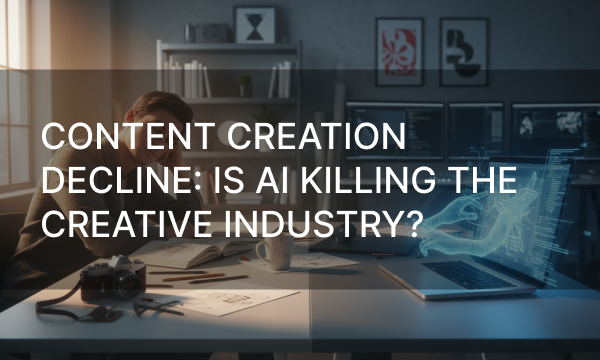Introduction: the Shift Toward Conversational Search
Digital advertising is moving beyond traditional keyword targeting toward a more conversational, intent-driven model powered by prompts. Fueled by advances in AI and natural language processing, this transformation demands that brands rethink how they connect with audiences. Instead of chasing fixed keywords, marketers must now anticipate and respond to nuanced, question-based searches, addressing not just what people ask but why they ask it.
To adapt, focus on understanding evolving search behaviors and the deeper motivations behind them. Analyze real conversations — from search queries and community forums to customer interactions – to uncover the phrasing and context users naturally employ. Then, create content and ad copy that offer direct, comprehensive, and contextually relevant answers. It’s less about listing features and more about solving problems, guiding decisions, and engaging in dialogue.
This new landscape also redefines keyword research. Keywords remain important, but the emphasis now lies in mapping topics, user pain points, and related questions. Tools that identify semantic relationships and conversational intent are essential. In essence, thriving in this new search era requires being more human: empathetic, responsive, and context-aware.
The Great Search Overhaul
Large Language Models (LLMs) have redefined how people search. Instead of short, transactional phrases, users now express their needs in long, detailed prompts that mirror natural conversation. This evolution signals the end of keyword fragments and the rise of dialogue-based interaction; a shift from searching for words to searching through meaning.
Moreover, multimodal capabilities are expanding search beyond text. People increasingly use images, voice, and video to describe what they want, forcing search engines to interpret a wider variety of signals. The traditional “ten blue links” format is fading, replaced by AI-driven, personalized experiences where users receive synthesized, actionable insights.
Search is no longer just about finding information, it’s about making decisions. Users expect AI to help them evaluate options, compare outcomes, and offer personalized recommendations. This redefines the role of search engines, with Google leading the charge toward a future centered on conversation, context, and proactive assistance.
The Future of AI-driven Advertising
Modern advertising success depends not just on responding to intent, but on predicting it. This is where Google’s AI-first tools, such as Performance Max, excel, unifying creative assets, audience data, and product feeds to optimize campaigns across all channels without rigid keyword dependencies.
The newer AI Max approach represents the next step: combining Dynamic Search Ads with automated asset generation and broad matching to cover even complex, multi-layered prompts. Traditional tactics like reviewing search terms or manually refining negative keywords still matter, but they belong to a fading paradigm.
In the future, ads won’t simply react to specific keywords: they’ll interpret context, scenario, and unspoken intent. Your competitive edge will depend on the data and creative inputs you feed into the AI. The richer and more accurate the information, the better the AI can advocate for your brand and connect with high-intent users.
The New Challenge: Competing in the “Zero-Click” Era
AI-powered shopping assistants are reshaping how consumers buy. Increasingly, users complete their entire journey, from discovery to decision, without ever visiting a brand’s website. This “zero-click” behavior means engagement now begins inside AI platforms, often before traditional search even starts.
Keywords aren’t disappearing, but their role is changing. Advertisers can now succeed by mastering three key levers:
1. Signals Over Keywords
- Use CRM and first-party data to build audience lists.
- Enrich product feeds with detailed attributes and structured data.
- Maintain “feed hygiene” to ensure LLMs access accurate product info.
- Expand your site with machine-readable assets like charts and tables.
2. Creative As Targeting
- Develop modular ad creatives with interchangeable titles, visuals, and copy.
- Align variations with different buyer journey stages to maintain relevance.
3. Measurement Beyond Clicks
- Track impression share and product visibility in AI-driven surfaces.
- Measure how well users complete goals, not just how often they click.
- Evaluate performance within AI Max and Performance Max to refine regularly.
A New Strategic Framework
1. From Keywords to Context
Stop optimizing for the query — optimize for the intent. Ask not “Which keyword has the highest volume?” but “What is the user trying to achieve, and what information helps them move forward?”
2. Master the New “Keyword”: The Prompt
Prompts exist in three evolving layers:
a) Long-Tail Conversational Queries: Reflect natural language.
→ Build FAQ and guide-style content.
→ Use conversational tones and question-based ad copy.
b) Semantic Search & Topic Authority: Focus on depth and structure.
→ Create content clusters around pillar topics.
→ Implement schema markup to clarify meaning.
c) Generative AI Search (e.g., SGE, ChatGPT): Optimize for citation.
→ Demonstrate E-E-A-T (Experience, Expertise, Authoritativeness, Trustworthiness).
→ Anticipate follow-up questions within your content.
3. Rethink Paid Search
- Embrace Broad Match + Smart Bidding to let AI identify unseen opportunities.
- Feed the AI with high-quality creative and audience data.
- Prioritize audience signals — you’re teaching AI who to target, not what words to match.
4. Define a New KPI: Satisfaction per Prompt
Your goal is to be the most satisfying answer to a user’s question. Track:
- Dwell time and engagement depth
- CTR from AI-driven SERPs
- Conversion rates tied to brand and informational queries
Action Plan Summary
- Shift your focus from keywords to intent. Understand why users search, not just what they type.
- Build comprehensive content hubs. Use topic clusters and schema markup to signal expertise and context.
- Let AI do the heavy lifting. Trust Broad Match, Performance Max, and audience signals to find new opportunities.
- Feed the machine well. Supply detailed product data, high-quality creative assets, and clean site structure.
- Become the answer. Prioritize authority, clarity, and usefulness so AI consistently recommends your brand.
Conclusion
For years, digital visibility relied on precise keyword strategies and meticulous optimization. But AI-powered search has changed the rules. Success now depends on understanding why users search, what they truly seek, and how AI interprets those intentions.
The future belongs to brands that can shape — not just follow – AI’s understanding of user needs. It’s no longer about showing up in results; it’s about becoming the trusted answer AI chooses to recommend. Winning this “moment of recommendation” is the new definition of visibility, where presence evolves into preference, and preference drives lasting growth.





